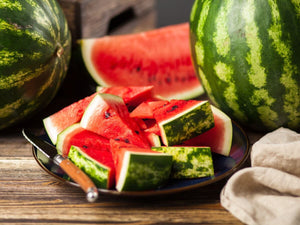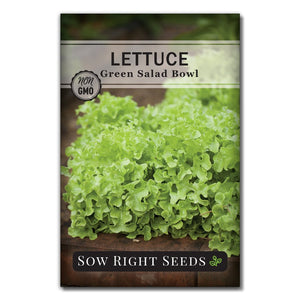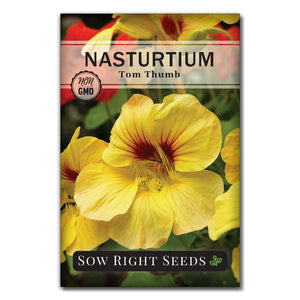How to Use Grow Lights for Indoor Seed Starting and Healthy Seedlings
Starting seedsWhat you need to know about grow lights for successful seed starting.
Light is critical for plant health. When starting seeds indoors the use of grow lights often becomes necessary. So, how do you choose the best grow lights? And how do you use grow lights to maximize your seed-starting success?
We’ll discuss the types of light to use and cover the most common questions gardeners have when using grow lights.

Choosing the Best Grow Lights for Seedlings
Once you understand the light requirements for seedlings, you’ll be able to choose the best grow lights. They don’t have to be expensive, and there are many DIY ways to adapt them to your specific seed starting location.

Understanding the Light Spectrum
To choose the best grow lights, you first need to know why the light spectrum matters. You may already know that the full visible light spectrum is made of colors. The range of colors is the acronym you memorized in grade school. ROY G. BIV. When all of these colors hit your eyes, you see white. Plants make use of the full light spectrum.
Understanding Lumens
Lumens are used to rate the brightness of bulbs. Or how bright it is to the visual eye. The higher the lumen number, the brighter the bulb.

Light Bulbs
When you buy bulbs for your grow lights, you’ll see that some say warm and some say cool. The cool spectrum is the blue range. The warm spectrum is the red. Now that you know plants use the full spectrum of visible light, you’ll want to use full-spectrum bulbs. You could use one of each in a two-bulb system.
We won’t go into an in-depth discussion of the differences and history of light bulbs. Still, fluorescent bulbs are more efficient than incandescent bulbs, and LEDs are the most energy-efficient.
What matters most for seedlings is having the full spectrum of light and considering how much heat the bulbs produce. If they produce too much heat, you will need to have a fan to cool off plants or position the light fixtures further away.
If you have a flat of seeds, you will want a long bulb or group of bulbs that cover the whole flat. Using one spotlight-type bulb will cause the seedlings furthest away to stretch toward the light source.
For many years, I used fluorescent shop lights. They were long enough for the seed trays, and they were inexpensive. However, the prices have gotten better on LEDs, and they are more efficient and don’t generate as much heat.

Grow Light FAQs
Now, to answer some of the most common questions about grow lights.
Should I use grow lights on seedlings?
This is the first question gardeners have. I’ve found that even though sometimes I’ve been able to successfully start seeds in a windowsill or sunny spot, grow lights are better. Using a grow light will improve your long-term success if you want to prevent leggy seedlings and have sturdy, vigorous plants that can thrive and be transplanted.
What type of grow light is best for seed starting?
A full-spectrum light is the best type of grow light for starting seeds indoors. An LED will give off less heat and is more energy efficient, which may cost you less in the long run.
Should grow lights be on 24/7 for seedlings?
When you start using grow lights, the next question is how long seedlings should be under a grow light. Plants, like people, need a rest period. So, although it may seem like a good idea to give your seedlings constant light, they actually need some darkness. During these hours of night, plants are able to regenerate phytochrome.
Should you use a grow light when germinating seeds?
For the actual seed germination process, most seeds don’t need light. But for those seeds that do, you’ll want to have your grow lights set up when you first plant them. Some seeds that need light for germination include:
Seeds that don’t need light include nasturtium, sunflowers, and calendula. However, they all need light as soon as they sprout.
How many weeks do seedlings need a grow light?
Seedlings need grow lights as long as there is insufficient indoor light. So, as long as the plants are inside, you should have them under a grow light. Again, this will result in healthier plant growth and help prevent leggy seedlings.

How to Use Grow Lights on Seedlings
Position lights close to seedlings.
The lights need to be close enough for the seedlings to get the full spectrum they need without becoming elongated or leggy.
Place grow lights 3 to 4 inches away from the seedlings.
You may need to rotate the plants
You can also use surfaces to reflect light back onto the seedlings
Some lights work with chains so that you can adjust them up and down. At Sow Right Seeds, most of our lights are attached to the top of the shelf. We then lower our seedling trays as the plants grow.
The minimum amount of light is 10 hours. Generally, seedlings need 14 to 16 hours. You can get into the scientific amounts and test it down to the optimal hours and minutes - and some studies do just this.
Keep a close eye and see if they seem to be stretching. You want to catch that early to prevent leggy seedlings.
Provide a darkness or night hours.
Don’t keep lights on 24/7. The plants will need an 8-hour rest period.
Using grow lights for seedlings doesn’t need to be complicated. The basics to remember are that plants need the full spectrum of light. They also need a period of night as well as daylight. Keep your lights close enough to the seedlings that they don’t have to stretch to get enough light.
For the home gardener, these basic guidelines will help you use grow lights for successful seed starting for herbs, vegetables, and flowers.
You’ll find more helpful seed-starting information in our Planter’s Library.
Happy Growing!
Written by Beverly Laudie







Leave a comment